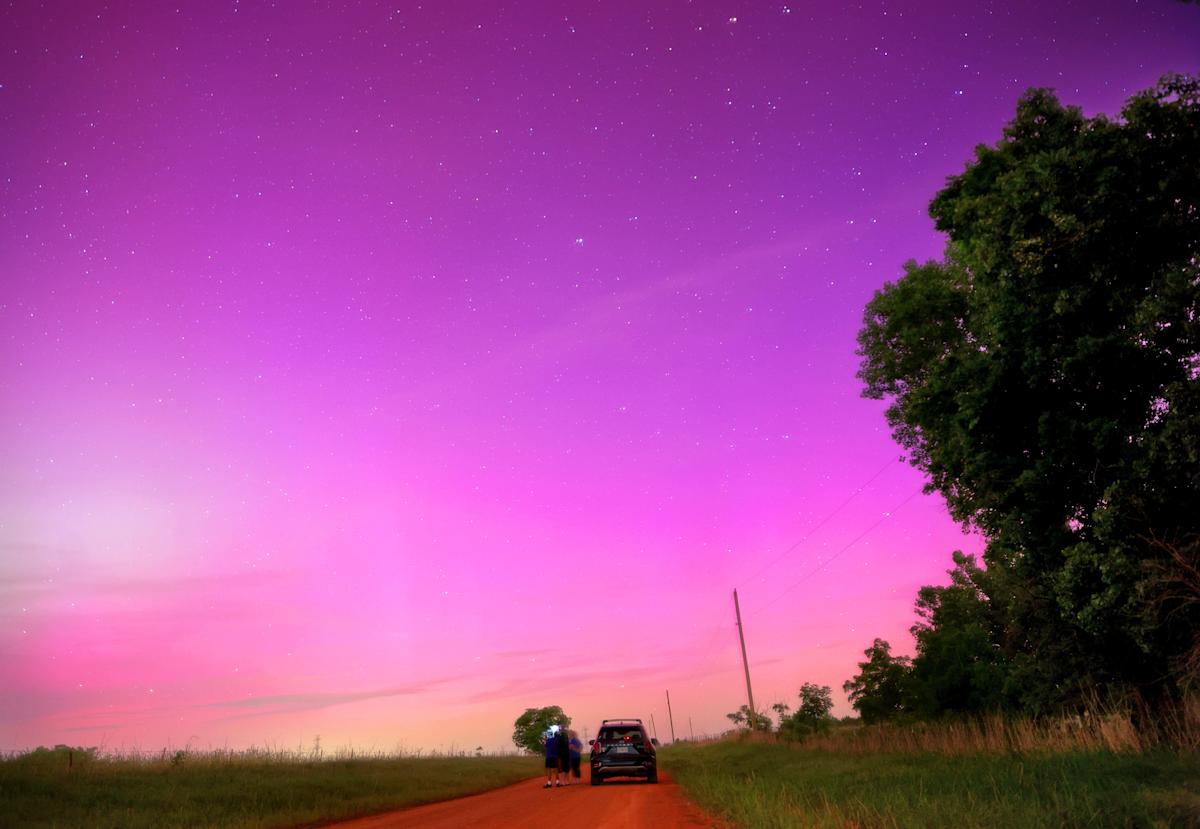A Celestial Spectacle: Auroras Set to Dazzle Over a Dozen Northern States
Get ready for a breathtaking display as the northern lights are predicted to illuminate the skies over more than a dozen states in the northern U.S. This rare celestial event promises to captivate stargazers and nature enthusiasts alike. The phenomenon of the auroras, also known as the Aurora Borealis in the northern hemisphere, is a stunning natural light display that occurs when charged particles from the sun collide with Earth’s atmosphere. This article will delve into the science behind this mesmerizing spectacle, the states where the best views can be experienced, and tips for maximizing your aurora-viewing experience.
Understanding the Science Behind Auroras
The northern lights are more than just a visual spectacle; they are a result of complex interactions between the Earth’s magnetic field and solar wind. Here’s a breakdown of how it works:
- Solar Wind: The sun constantly emits a stream of charged particles known as solar wind. During periods of heightened solar activity, such as solar flares or coronal mass ejections, this wind can intensify.
- Earth’s Magnetic Field: The Earth’s magnetic field acts as a shield, diverting much of the solar wind. However, at the polar regions, the magnetic field lines converge, allowing these charged particles to enter the atmosphere.
- Atmospheric Interaction: As these particles collide with gases in the Earth’s atmosphere, primarily oxygen and nitrogen, they excite the atoms and molecules. When these excited atoms return to their normal state, they release energy in the form of light, creating the stunning colors of the auroras.
The colors of the auroras vary depending on the type of gas involved and the altitude of the interactions. Oxygen at higher altitudes can produce red and green colors, while nitrogen can lead to purples and blues. The interplay of these elements results in the breathtaking display we see in the night sky.
Which States Will Experience the Auroras?
As the forecast indicates a heightened chance for auroras, residents and visitors in several northern states should keep an eye on the skies. The following states are expected to witness this celestial spectacle:
- Alaska: Known as one of the best places in the world to view the northern lights, Alaska offers numerous locations away from city lights.
- Montana: With its vast open landscapes, Montana provides excellent viewing opportunities, especially in the northern regions.
- North Dakota: The lack of light pollution in many areas makes North Dakota a prime spot for aurora viewing.
- Minnesota: The Boundary Waters and areas near Lake Superior are popular destinations for aurora enthusiasts.
- Wisconsin: Northern Wisconsin, particularly around the Apostle Islands, is an emerging hotspot for aurora watchers.
- Michigan: The Upper Peninsula, especially around Lake Superior, offers stunning views of the auroras.
- New York: Areas in the northern part of the state, such as the Adirondacks, are also excellent for aurora viewing.
- Vermont: While less common, auroras can occasionally be seen in northern Vermont.
- Idaho: The scenic landscapes in northern Idaho provide a picturesque backdrop for the auroras.
- Wyoming: The wide-open spaces of Wyoming can yield some spectacular views of the northern lights.
- Maine: Northern Maine is another location where observers may catch a glimpse of this celestial phenomenon.
- New Hampshire: The White Mountains region is a potential viewing area for the northern lights.
Tips for Viewing Auroras
To make the most of this awe-inspiring event, consider the following tips to enhance your aurora-viewing experience:
- Find a Dark Location: Light pollution can significantly diminish your chances of seeing the auroras. Head to rural areas or national parks where the skies are dark.
- Check the Aurora Forecast: Websites and apps dedicated to aurora forecasts can provide real-time updates on solar activity and the likelihood of auroras in your area.
- Dress Warmly: Northern states can be quite cold, especially during winter months. Dress in layers and be prepared for the chilly temperatures.
- Be Patient: Auroras can be unpredictable. Sometimes, you may need to wait for hours for the lights to appear, so bring snacks, drinks, and a comfortable chair.
- Use a Good Camera: If you want to capture the beauty of the auroras, invest in a good camera with manual settings. A tripod will also help stabilize your shots.
Local Events and Activities
As the auroras captivate the northern states, many local communities are gearing up to celebrate this celestial event with various activities. From guided aurora tours to photography workshops, there are plenty of opportunities to make the experience memorable:
- Aurora Tours: Many tour companies offer guided excursions to optimal viewing spots, complete with warm drinks and local storytelling.
- Photography Workshops: Capture the beauty of the auroras with expert guidance on photographing the lights.
- Community Stargazing Events: Local observatories and astronomy clubs often organize events where people can gather to watch the auroras together.
Conclusion
The upcoming aurora display is set to be a spectacular event that captures the imagination and hearts of all who witness it. With preparations underway in various northern states, this is an opportunity for residents and visitors alike to step outside and experience the magic of the cosmos. Whether you’re a seasoned aurora chaser or a curious first-timer, the northern lights promise to deliver an unforgettable experience. So grab your warmest coat, find a dark spot, and prepare to be dazzled by one of nature’s most breathtaking phenomena!
See more Your Daily Weather



